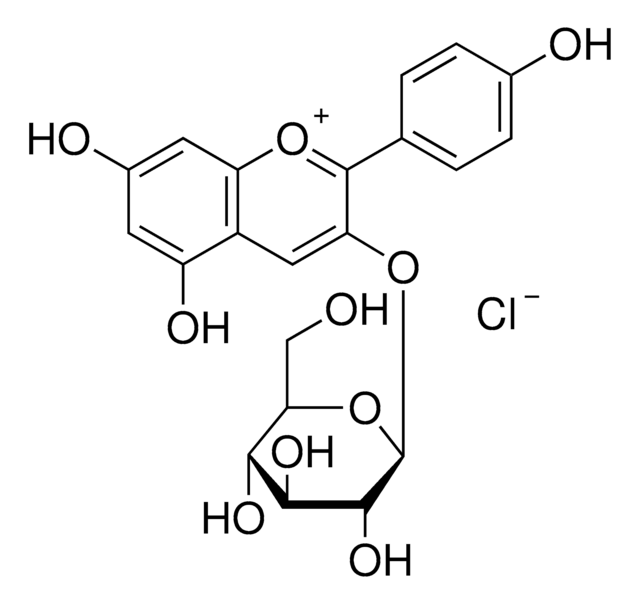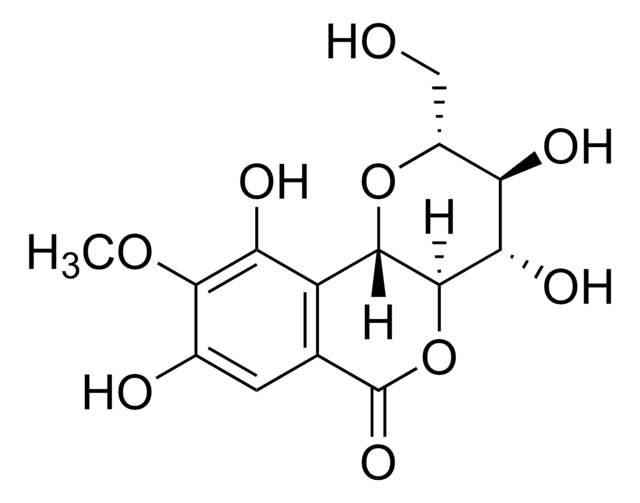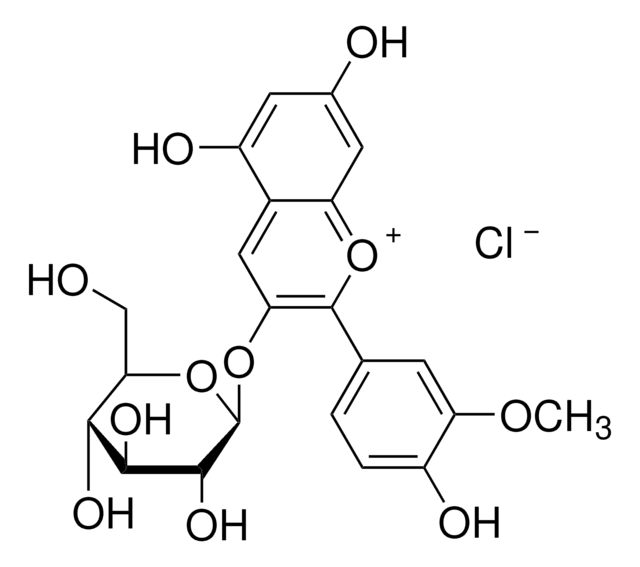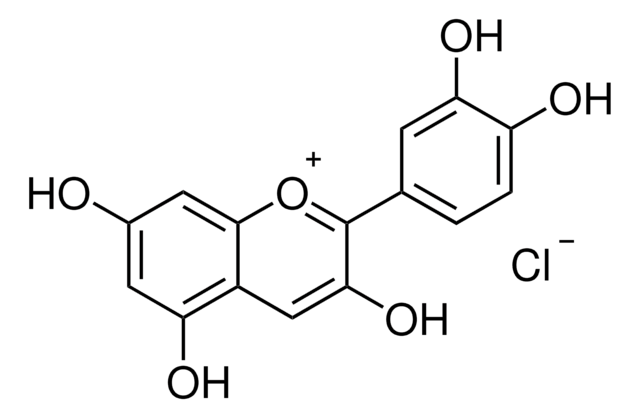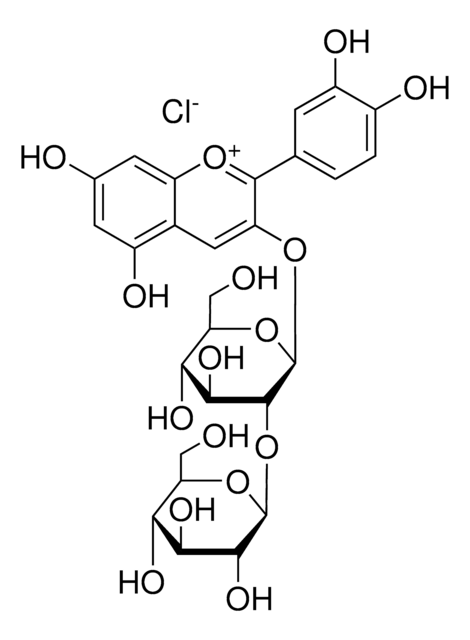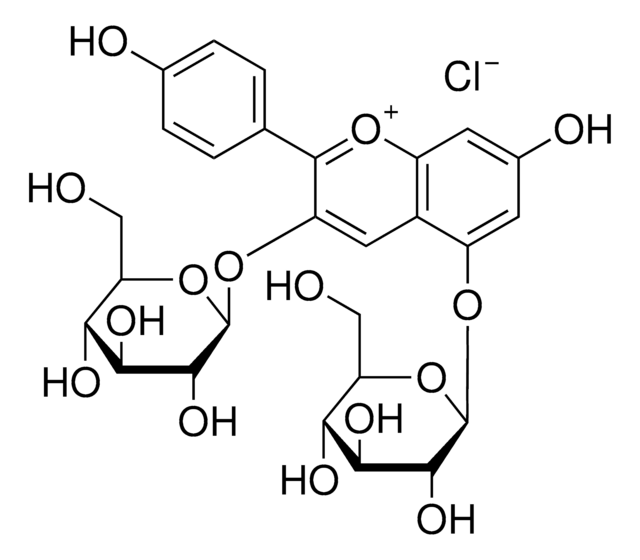53489
Callistephin chloride
≥95.0% (HPLC)
Sinônimo(s):
3-(Glucosyloxy)-4′,5,7-trihydroxyflavylium chloride, Pelargonidin 3-O-glucoside chloride
About This Item
Produtos recomendados
fonte biológica
synthetic
Ensaio
≥95.0% (HPLC)
forma
powder
Condições de expedição
wet ice
temperatura de armazenamento
−20°C
cadeia de caracteres SMILES
[Cl-].OC[C@H]1O[C@@H](Oc2cc3c(O)cc(O)cc3[o+]c2-c4ccc(O)cc4)[C@H](O)[C@@H](O)[C@@H]1O
InChI
1S/C21H20O10.ClH/c22-8-16-17(26)18(27)19(28)21(31-16)30-15-7-12-13(25)5-11(24)6-14(12)29-20(15)9-1-3-10(23)4-2-9;/h1-7,16-19,21-22,26-28H,8H2,(H2-,23,24,25);1H/t16-,17-,18+,19-,21-;/m1./s1
chave InChI
CAHGSEFWVUVGGL-UBNZBFALSA-N
Procurando produtos similares? Visita Guia de comparação de produtos
Ações bioquímicas/fisiológicas
Embalagem
Código de classe de armazenamento
11 - Combustible Solids
Classe de risco de água (WGK)
WGK 3
Ponto de fulgor (°F)
Not applicable
Ponto de fulgor (°C)
Not applicable
Certificados de análise (COA)
Busque Certificados de análise (COA) digitando o Número do Lote do produto. Os números de lote e remessa podem ser encontrados no rótulo de um produto após a palavra “Lot” ou “Batch”.
Já possui este produto?
Encontre a documentação dos produtos que você adquiriu recentemente na biblioteca de documentos.
Os clientes também visualizaram
Nossa equipe de cientistas tem experiência em todas as áreas de pesquisa, incluindo Life Sciences, ciência de materiais, síntese química, cromatografia, química analítica e muitas outras.
Entre em contato com a assistência técnica